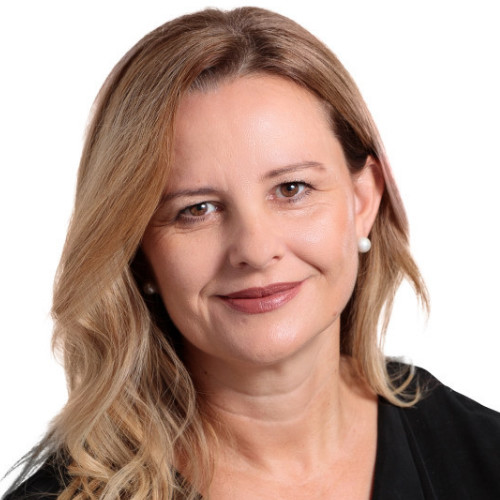
- Author: Nicole Madigan
- Posted: January 25, 2022
Where are CFOs Investing & Saving in 2022?
In the second of the three-part interview series, Nicole Madignan speaks with Mary Stojcevski CFO & Executive Director, Dicker Data (ASX: DDR) – An Australian-owned and operated, ASX-listed technology hardware, software and cloud distributor with over 41 years of experience, to find out where she will be spending and saving in the new year.
The technology industry was one of the lucky beneficiaries of COVID-19, with the move to remote work and increased digitalisation of businesses, according to Dicker Data CFO Mary Stojcevski.
“Initially the concerns were around the uncertainty of customers in lockdown and their ability to pay for their purchases,” Ms Stojcevski says.
“Therefore proactive work with suppliers around trading terms and creating capacity in working capital.
“But this concern was unfounded and in fact it was the opposite and our industry experienced massive growth.
“The impact is felt more with reliance on global manufacturers for product and as a result stock ordering is based on longer forecasts and placing orders in advance.”
For Dicker Data, this meant a longer ordering cycle and inconsistent supply, which resulted in, at times, having to hold higher levels of inventory.
Ms Stojcevski says she expects this to continue into next year, which in turn will impact investment in working capital and put pressure on cash.

“Therefore in our industry working capital management would be priority as a result of the flow on impacts of Covid.”
Despite borders reopening, Ms Stojcevski expects to see continued investment in remote work forces and digital capabilities that enable teams to work remotely.
“We expect these investments to continue as technology advances and workforces become more distributed, enabling our people to continue working productively and efficiently in a hybrid and ‘work from anywhere’ remote environment,” Ms Stojcevski says.
“As Australia’s largest value-added distributor of IT equipment, we see first-hand the increase investment businesses are making towards their digital transformation.
“Whilst this year and last year was all about devices and peripheral IT equipment to provide workforces with immediate remote access, next year expect further spending in enhancing connectivity to provide increased speed and workload capabilities, infrastructure upgrades and cyber security to protect the work anywhere environments.
“In our industry vendor and customer in-person events were very common before lockdown.
“With borders opening we expect travel and spending on promotional events to increase.
“We also expect personal travel spending to increase and one of our strategies has been to partner with Qantas and their frequent flyer program and offer this to our customers as part of our promotion.”
With world wide supply shortages and no indication that this will ease in the next 12 months, Ms Stojcevski also expects to see increased costs of freight and logistics.
“While some of these costs may be able to be passed on in price increases, ultimately someone has to pay for this so depending on what sector you are in, you could see increase in product or raw materials as a result.”
While work from home is likely here to stay, Ms Stojcevski believes hybrid work will be the most likely outcome for 2022, so businesses will need to make decisions on how to invest in equipment for staff across both work environments.
CFOs will need to work closely with all parts of the business, to have a good overview of all pressure points. With this understanding, CFOs can work with other leaders in the business to determine whether a cautious approach should be taken, or – particularly in growth industries – whether the team should be open to innovation and investments.
“However to be able to maintain sense of culture and collaboration I believe it will sway to more days in the office than from home,” she says.
“To this end I see increased spending on office based staff costs and more-so employer-brand initiatives to encourage in-office attendance for example – introducing fitness classes, wellbeing lunch and learn sessions etc.
“Most of these, we at Dicker Data have been implementing for sometime, but for other companies, now more than ever it is a competitive employment market so expect increased spending on people.”
If the last two years have shown us anything, Ms Stojcevski says it’s that businesses need to adapt to the changing work landscape and the environment they work and operate in.
“If they don’t they risk, being impacted or left behind,” she says.
“Our contingency plan would be to react and respond early to changing circumstances. CFOs should be prepared to change priorities, with caution, and help their business respond to changing circumstances in particular on decisions in regard to deployment of resources and capital.”
As we return to a semi-normal world in 2022 – whatever that may be – Ms Stojcevski says CFOs will need to work closely with all parts of the business, to have a good overview of all pressure points.
With this understanding, CFOs can work with other leaders in the business to determine whether a cautious approach should be taken, or – particularly in growth industries – whether the team should be open to innovation and investments.
“It is more than just the numbers,” Ms Stojcevski says.
“The benefits include enhanced collaboration, in-person meeting engagement, employer brand and culture enhances with in-person experiences, freedom of choice and increased flexibility.”








